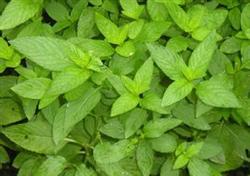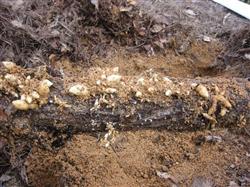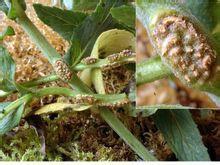Three-dimensional cultivation of soybean Gastrodia elata

Gastrodia elata is a kind of traditional Chinese medicine, which can replenish qi, calm shock, nourish liver and stop dizziness, and dispel rheumatism. Strengthen muscles and bones and other effects. In recent years, on the basis of artificial box planting and making full use of the growth characteristics of Gastrodia elata, we have successfully planted Gastrodia elata underground and dwarf crop soybean above ground. According to the investigation and determination of the agricultural station of Shuidian Town, the three-dimensional cultivation of soybean Gastrodia elata produced 200 Mu of dried hemp products, with an output value of 8000 Mu, with an output value of 8000 Mu (calculated as 36 Mu 40 yuan / kg) and 150 Mu of soybean (150 Mu). The output value was 360,420 yuan (calculated by 2.4 yuan / kg). Total output value per mu is 8360 Mu 10420 yuan. After deducting 4000 yuan invested in planting hemp and 20 yuan invested in planting soybeans, the net profit per mu can be 4300 million 6300 yuan per year. In this paper, the three-dimensional cultivation technology of soybean Gastrodia elata is introduced. First, the source of Armillaria mellea strain is to collect wild Armillaria mellea; the second is to use wild Armillaria mellea or fruiting body (wild Pleurotus ostreatus) as the original strain to obtain pure bacteria through tissue isolation and culture; the third is to introduce bacteria, that is, to purchase pure bacteria directly from the culture or flax planting units, and then carry out their own expansion culture. 2. For the culture of bacterial stick, oak is the best. Generally choose the oak branches cut down after "the Beginning of Winter" and before "the Spring Equinox", which are 5cm in diameter and 45cm in length, and should be dehydrated by 30%. In addition, 5 parts of broad-leaved leaves collected in late autumn and 1 part of fine sand were mixed evenly as culture material. Stick culture is usually carried out 1 or 2 months before flax planting. The wooden box culture method is usually used, that is, with a wooden box with a length of 60 cm, a width of 40 cm and a height of 30 cm, two small holes with a diameter of 1mi 2 cm are drilled at the bottom of the box, and then a layer of culture material with a thickness of 5 cm is laid on the bottom of the box. 5 equidistant pendulum rods are filled with culture material, and when the rod diameter is half of the diameter, the cultivated branches are placed between the rods; continue to add the culture material to flat, and then spread the culture material with a thickness of 2 mi 3 cm on top. The top layer is sealed with culture material or 2 cm thick pure sawdust and poured through with clean water. The bacteria can be used in more than 1 month. 2. Cultivation techniques 1. According to the living habits of Armillaria mellea, the sandy soil with loose soil, good drainage, 40% 60% soil water content and strong air permeability is generally selected. The ground should be cleared of debris. 2. Cultivation method Gastrodia elata is planted on the flat border, and then soybeans are planted on the border. Gastrodia elata grows in the ground and soybeans grow on the ground. The reproduction of Gastrodia elata can be divided into sexual reproduction and asexual reproduction. Asexual reproduction is generally used in production. Cultivation time is divided into spring planting and autumn planting, generally more spring planting, the time before and after "Qingming Festival". Gastrodia elata planting: make the bed first, the depth of the border is 15ml 20cm, the width is 100cm, the length is unlimited. The working track is 50 centimeters wide. The bottom of the border is covered with 3cm thick sand or culture material, and the pre-cultivated bacterial sticks are placed at the bottom of the trough at a distance of 10cm apart, and humus or wet fine soil is added at the same time. When filling to half of the bacterial sticks, Gastrodia elata seeds are placed between the sticks, then filled with humus or fine wet soil to flat, and then covered with 715cm of soil. Generally speaking, 0.5 kg of hemp seed is needed per square meter. When planting, it is best to grade the seed hemp, large and medium white hemp are planted together, and small white hemp and rice hemp are planted together, so as to facilitate harvest and management by stages. Finally, the border surface is leveled to facilitate soybeans sowing. Soybean planting: local lodging-resistant and high-yielding soybean varieties were selected and sown in early May. Hole sowing is generally used, with two rows per row, with a small row spacing of 60 centimeters. Large row spacing of 90 cm, plant spacing of 26 cm, seedlings during seedling, 8000 seedlings per mu. 3. Field management Gastrodia elata does not need to be fertilized during the whole growing period, but stagnant water is avoided and should be eliminated in time after rain. If the cultivated large and medium white hemp is harvested in about 18 days, the cultivated small white hemp and rice hemp will be harvested in the next autumn. Therefore, it is necessary to cover cold protection such as straw when overwintering, and to prevent livestock from trampling. Pest control, when insect pests occur in the cultivated land, 100-fold trichlorfon solution can be sprayed, and it can also be made into poison bait. In the cultivation of bacteria and flax, if the fungus is found to be infected with mold, it can not be used. 4. Harvest and processing first harvest soybeans above ground, and then harvest underground Gastrodia elata. The cultivated large and medium white hemp was in the dormant period from late October to early November with the decrease of temperature, when the pulp quality of Gastrodia elata was good and the drying rate was high. When harvesting, gently remove the topsoil, remove the bacteria stick in the soil layer, and collect the tubers of Gastrodia elata. Arrow hemp is processed into commodities, while small white hemp and rice hemp are reserved for planting. Processing method: first wash off the soil of the hemp body, brush off the bacteria and scales (rough skin), steam the soil pot for 20 minutes until there is no hard core, take it out and bake it, when the marijuana reaches 70% dry, gently flatten it, and then bake it to the whole dry.
- Prev

How to manage bottle-planted Gastrodia elata
Gastrodia elata growth period to prevent mold infection. Once green mold, scab and other miscellaneous bacteria are infected on the soil layer or box, you can gently spray a layer of Bordeaux solution (copper sulfate, quicklime and water according to the ratio of 1 ∶ 1 ∶ 140), dissolve 1 part of copper sulfate and 1 part of quickstone sand in water, and pour the aqueous solution of copper sulfate into lime milk.
- Next

Comprehensive control techniques of mint rust
Peppermint is a well-known medicinal plant at home and abroad, the whole plant is used as medicine. It is produced in Jiangsu. In recent years, with the adjustment of the rural planting structure and the needs of the market, the planting area of peppermint in various parts of Jiangsu has been expanded, but in the process of growth and development, it is often damaged by rust, which not only reduces the yield seriously, but also affects it.
Related
- Fuxing push coffee new agricultural production and marketing class: lack of small-scale processing plants
- Jujube rice field leisure farm deep ploughing Yilan for five years to create a space for organic food and play
- Nongyu Farm-A trial of organic papaya for brave women with advanced technology
- Four points for attention in the prevention and control of diseases and insect pests of edible fungi
- How to add nutrient solution to Edible Fungi
- Is there any good way to control edible fungus mites?
- Open Inoculation Technology of Edible Fungi
- Is there any clever way to use fertilizer for edible fungus in winter?
- What agents are used to kill the pathogens of edible fungi in the mushroom shed?
- Rapid drying of Edible Fungi

